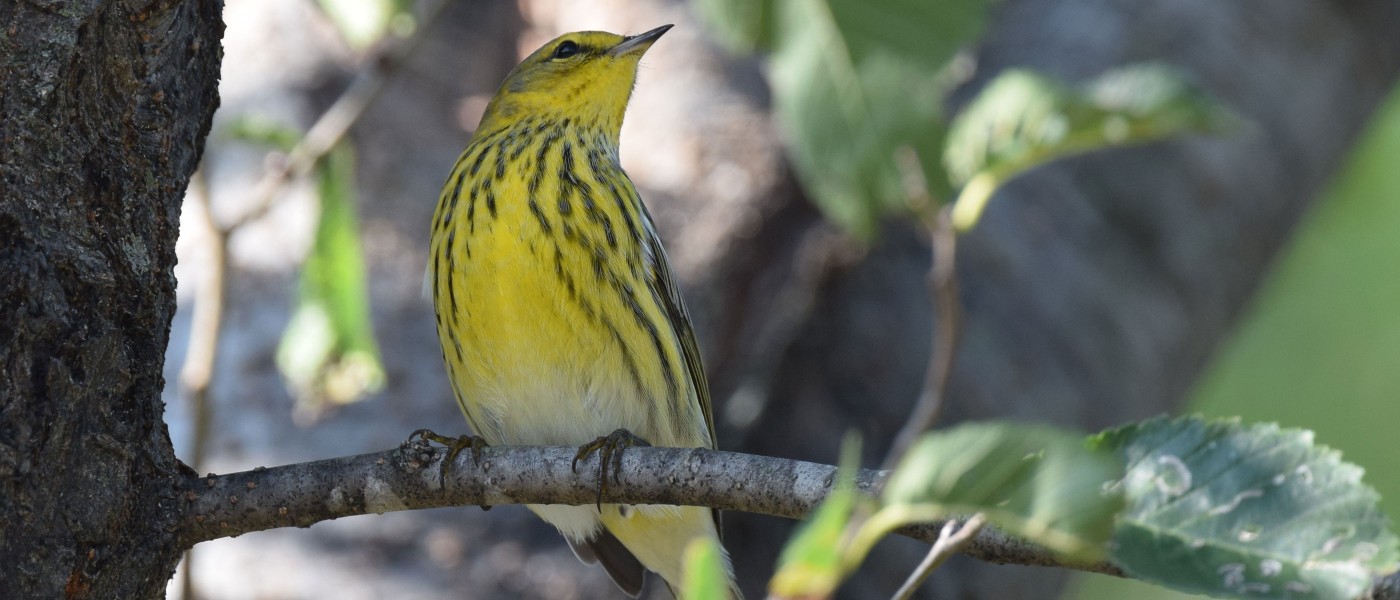Birds of Brooklyn: Cape May Warbler
The Cape May warbler is one of the most beautiful birds in North America. It has a yellow breast and belly with black streaks running from the throat all the way down to the tail. It is affectionately called the tiger warbler because of these colors. The male, in complete breeding plumage, has a chestnut patch on its cheek.
The bird is both a spring and fall migrant here in the NYC area. It spends the breeding time, late May to July, in the spruce forests of Canada and it spends winters in the Bahamas, Cuba, Hispaniola and other islands in the Caribbean. Spring migration is usually a little hurried as birds need to get to their breeding areas as soon as possible to set up territories and attract mates. Fall migration is, as for most birds, less rushed, and they like to take advantage of weather systems to help them along.
Cape May populations fluctuate greatly from year to year. This is because their main food source is the spruce bud worm, which also has fluctuating populations depending on weather, logging conditions, and use of insecticides to protect industrial forest crops. To account for either a feast or a famine, Cape May warblers lay more eggs than most warblers.
Fall migration for the local Cape May warblers, as for many warblers, is usually between September 1 and October 15. But the Cape May can extend its migration, maybe waiting for more favorable weather conditions, because of a special feature unique to this species. The tongue of the Cape May is in the shape of a tube, more like a straw, and that enables the bird to suck nectar from plants. Now here is where it gets interesting.
The Cape May can find the wells made by yellow-bellied sapsuckers and stick around the area feeding on the sap. The trees that the sapsucker has drilled in are sometimes referred to as “magic” trees as the sap attracts insects which in turn attracts birds. As for the trees, the sapsucker knows which ones bleed the most, like poplar trees, and concentrates on those. The Siberian elm is also a good bleeder and Central Park has a good collection of those. Central Park birders often just watch them and have wonderful luck spotting a variety of birds.
October is a great time to look for Cape May warblers as they migrate. I have recorded numerous sightings in NYC even into early November, with my record late date of November 22 when I spotted one in an elm tree here in Brooklyn. Some of my friends have even recorded December dates.
The Cape May warbler reminds us how dependent one species is upon other species and makes us more aware of the changing seasons. Having knowledge like this makes for a great appreciation of the world around us and lets us enjoy nature from an insider’s viewpoint.
The Birds of Brooklyn series looks at some of the most familiar and fascinating birds that call Kings County their habitat.


